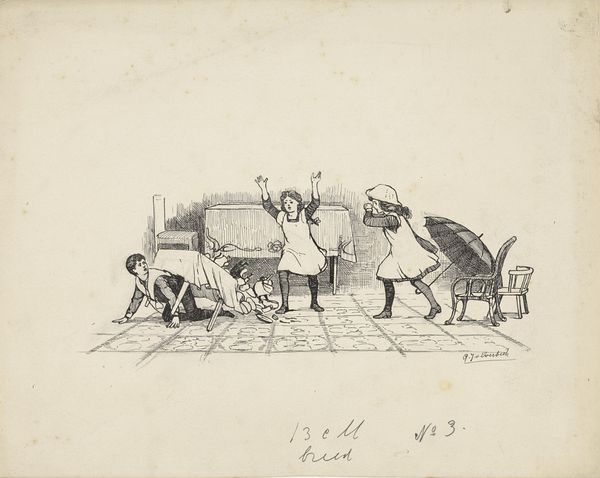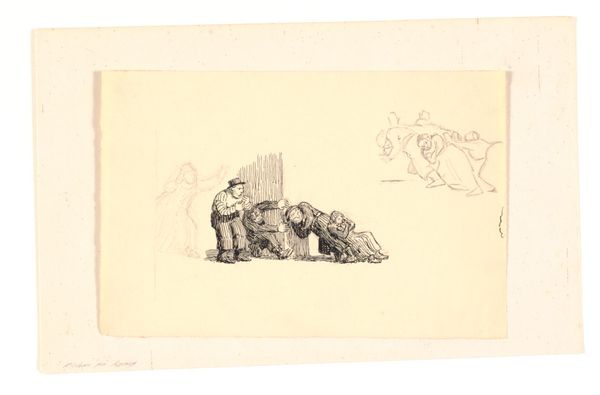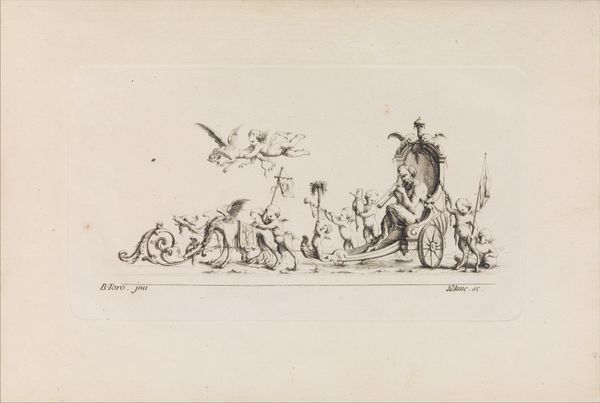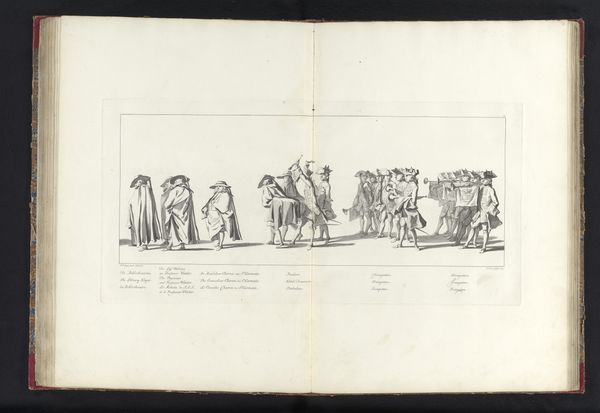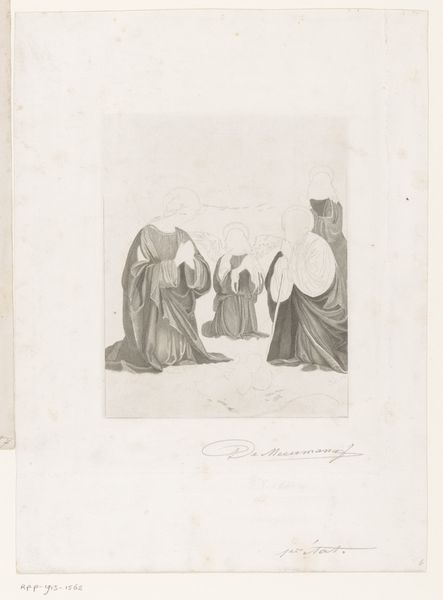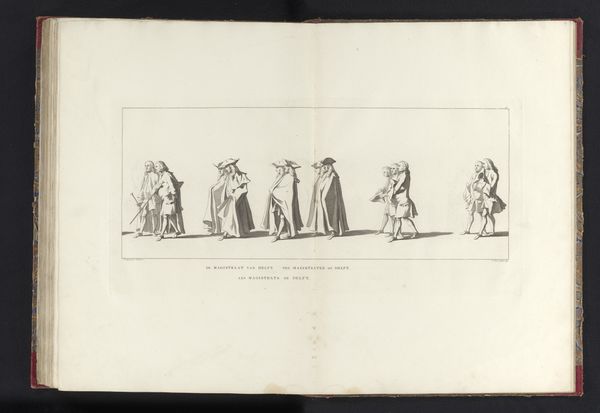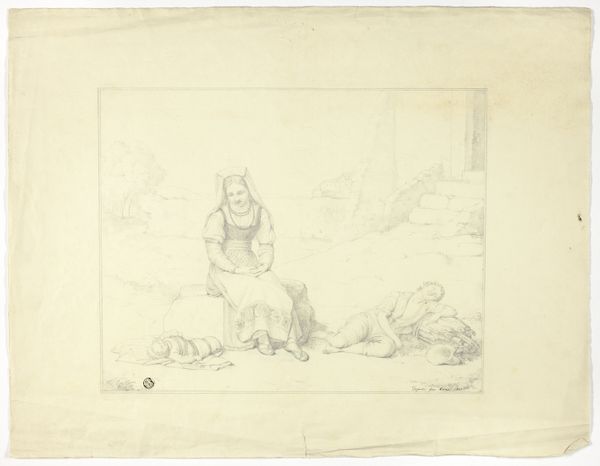
drawing, ink, pen
#
drawing
#
aged paper
#
light pencil work
#
quirky sketch
#
narrative-art
#
old engraving style
#
sketch book
#
figuration
#
personal sketchbook
#
ink
#
ink drawing experimentation
#
pen-ink sketch
#
sketchbook drawing
#
pen
#
genre-painting
#
sketchbook art
Dimensions: height 188 mm, width 276 mm
Copyright: Rijks Museum: Open Domain
Curator: Here we have “Meisje straft haar poppen,” which translates to “Girl Punishing Her Dolls," by Gijsbertus Johannes van Overbeek. The piece likely dates between 1892 and 1947. Editor: My initial reaction is unease. There's something unsettling about the power dynamic so clearly on display. Curator: Exactly! Consider the materials – pen and ink on paper, seemingly simple, almost like a quick sketch from a larger notebook. This economy emphasizes the immediacy and rawness of the interaction between the girl and her dolls. It looks almost like a production line in miniature. Editor: And that is where I find it fascinating, that idea of a “production line.” It’s difficult not to place this within the historical context of shifting societal expectations of childhood. What were the public anxieties regarding education and obedience reflected in art of this time? Curator: Precisely. And if we are thinking about production, it is also difficult to ignore the craft element here. The tools matter. The controlled precision of ink compared to the looser freedom offered by, say, charcoal creates a distance, an assertion of control. You cannot help but look into the labor it involves for this small piece, while equally acknowledging the fact it remains unfinished. Editor: The composition also contributes, doesn’t it? The girl is firmly upright, while the dolls are bent over. It’s a visual representation of hierarchy. Also, the image hints at an institutional setting. Perhaps an illustration of school life or even domestic servitude being normalized from a very young age. Curator: Perhaps the interesting part about a sketch is how its existence is shaped by both intentionality and contingency, the deliberate action and unplanned action. This sketch creates something uncanny, making you think how children would experience authority in an evolving societal structure. Editor: Reflecting on it, the strength lies in its stark simplicity. The drawing reveals anxieties regarding childhood power structures that society continues to engage with. Curator: I agree. It shows how much the careful use of material and form is effective in visual storytelling and the ways our reading shifts when art prompts difficult conversations about human interaction.
Comments
No comments
Be the first to comment and join the conversation on the ultimate creative platform.

